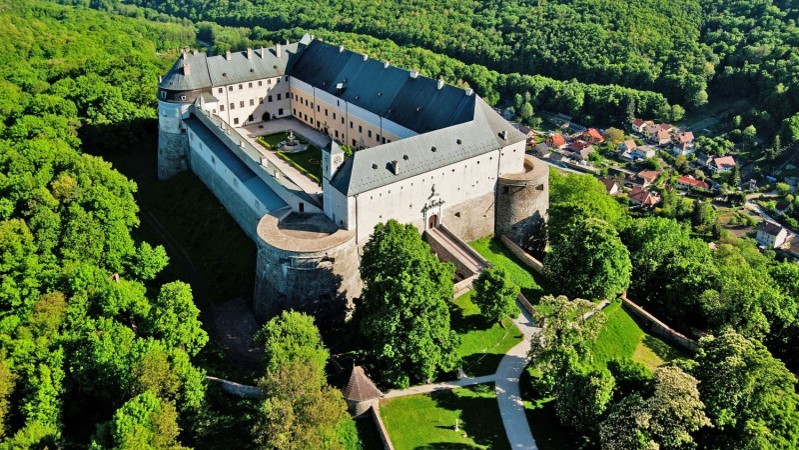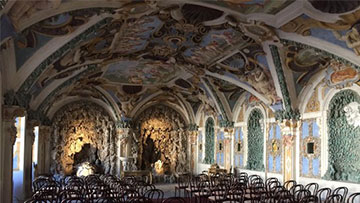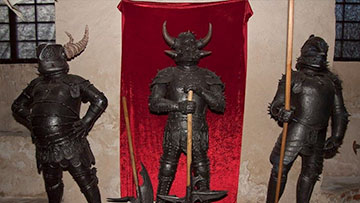Excursion
Red stone castle (Červený kameň)
Červený kameň (Red stone) Castle is situated in the Little Carpathian mountains only 17km from Pezinok. We will take a 1-hour guided tour which leads through twenty-four richly furnished rooms and a knight`s hall in the castle built in the 13th century and renewed in 16th century. The tour will continue through the huge castle underground and fortification system.
AGO Modra
Our excursion will continue to the Astronomical and Geophysical Observatory (AGO) in Modra where we can take a short tour through the facility with a small refreshment and socializing. Outdoor activities might be affected by the weather and are therefore subject to change. The transportation will be arranged by buses. Both AGO observatory and the castle are within 20 minutes by bus from Pezinok.
The Astronomical and Geophysical Observatory (AGO) in Modra belongs to the Faculty of Mathematics and Physics, Comenius University in Bratislava. Officially established in 1992 the research facility currently deals with meteors, space debris, asteroids and comets in general for more than two decades now. Our station Modra is a part of the European Network (EN) for fireball detection coordinated by Ondřejov Observatory, Czech Republic. Forward scatter radio meteor observations were conducted on the base Bologna-Lecce-Modra as a collaboration of the Slovak Academy of Sciences and the Instituto per le Scienze dell Atmosfera e Oceano, Bologna. In the last 10 years, we have used AMOS video cameras for meteor observations.
The Slovak Video Meteor Network was established to provide a year-round detection of meteors. Currently, the network consists of four all-sky AMOS systems including spectral cameras. Also we are running AMOS stations at the observatories of Teide and Roque de los Muchachos on the Canary Islands since 2015 and in Chile since 2016. Naturally, we are collaborating with advanced amateur meteor observers from Slovakia, the Czech Republic, Poland and Hungary, providing regular weekend seminars in Modra 1-2 times per year. We hope the AGO Observatory and our current research and collaborations may be of particular interest to the IMC2018 participants.


